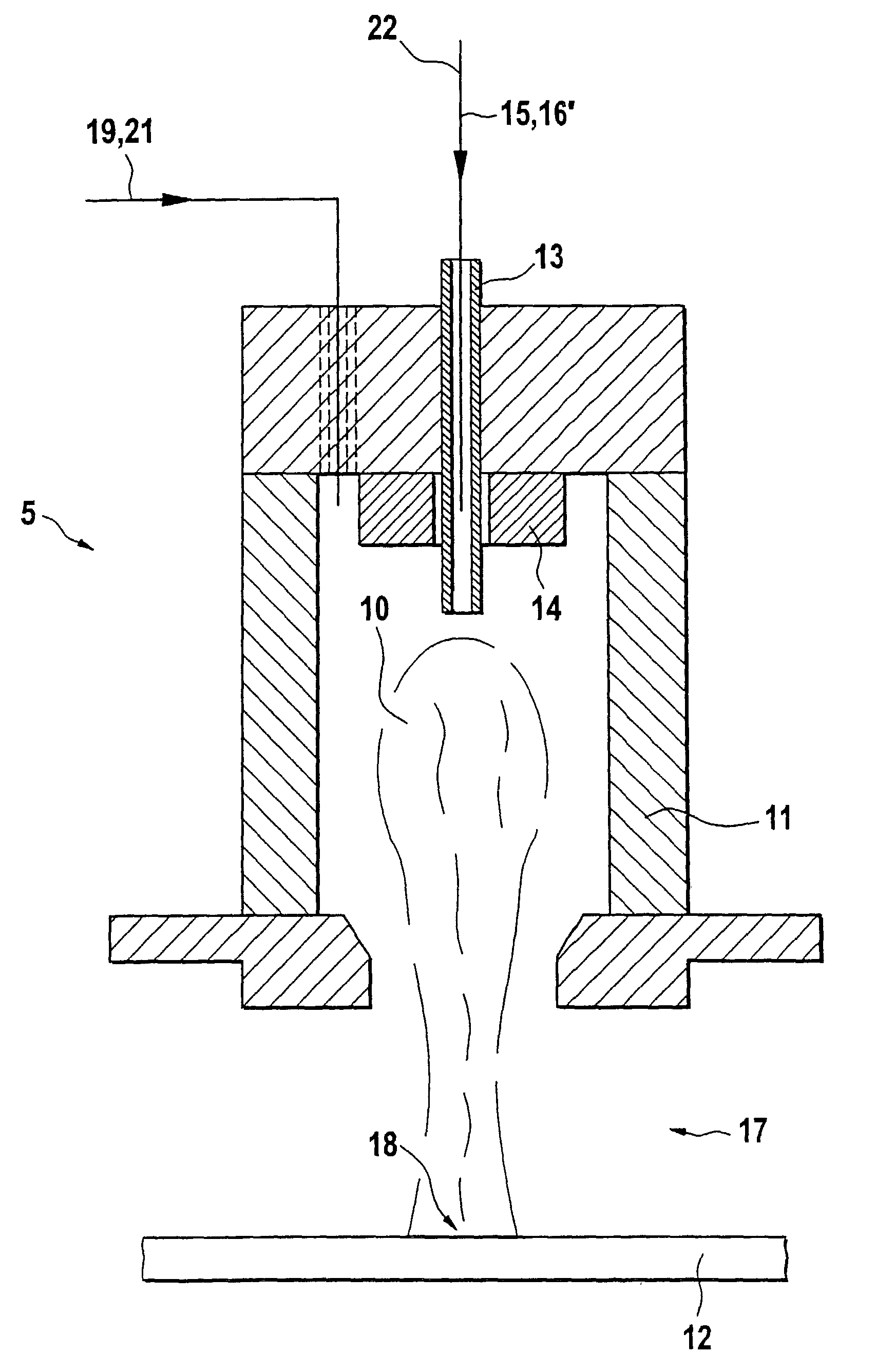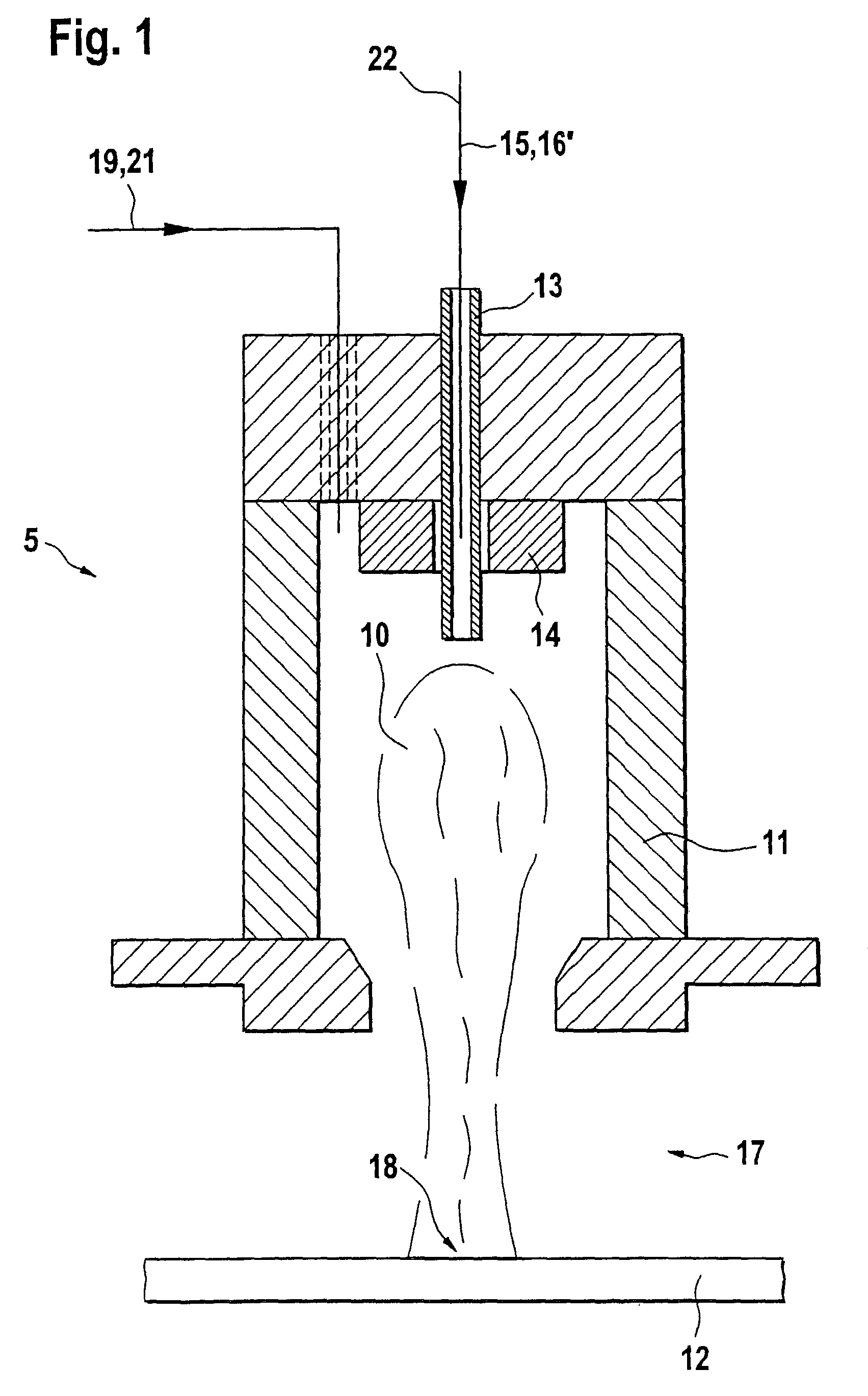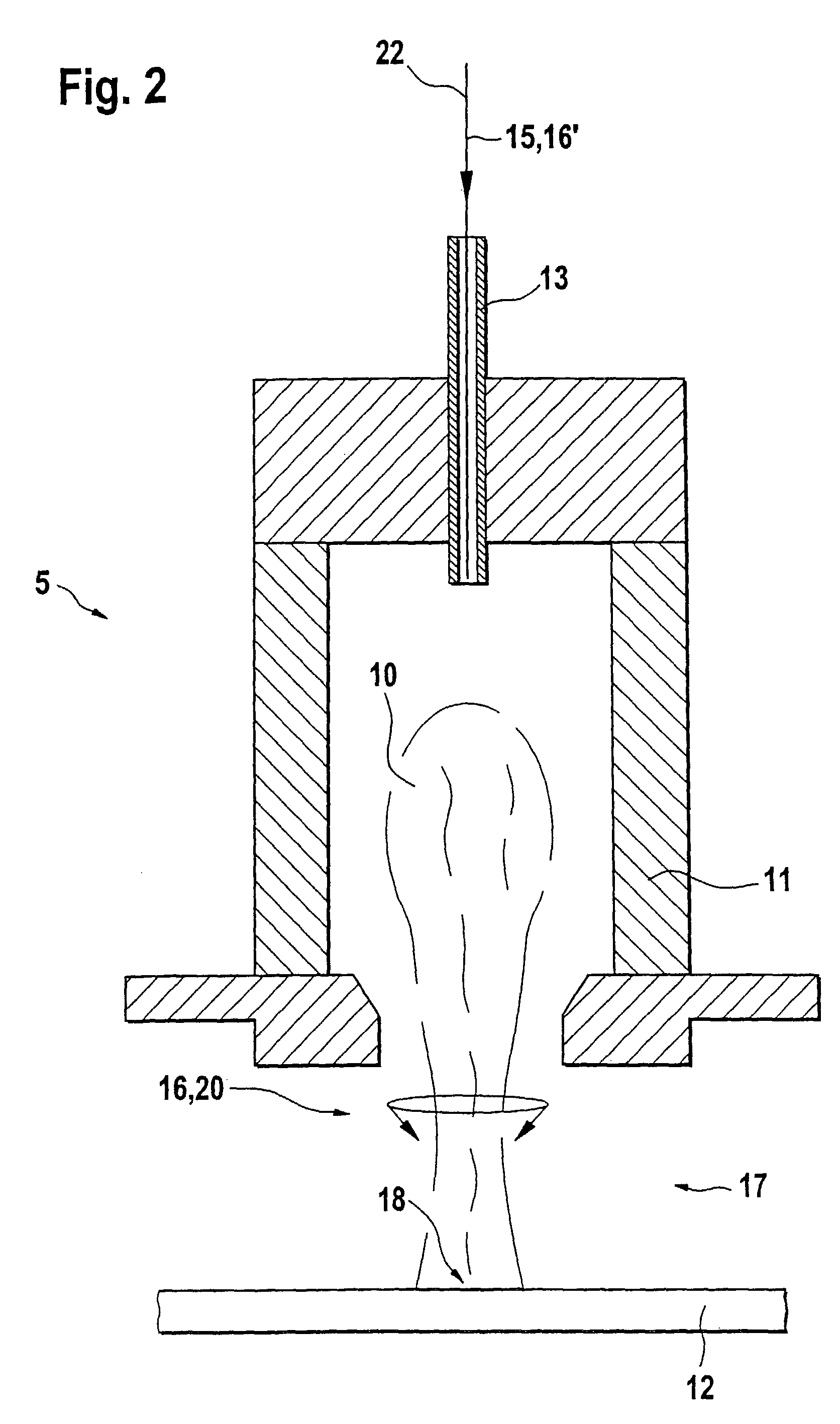Method for producing composite layers using a plasma jet source
a plasma jet and composite layer technology, applied in the field of plasma jet source production method, can solve the problems of low mechanical strength of deposited layers, high roughness, and low homogeneity of deposited layers having different functionalities
- Summary
- Abstract
- Description
- Claims
- Application Information
AI Technical Summary
Benefits of technology
Problems solved by technology
Method used
Image
Examples
Embodiment Construction
[0031]A plasma jet source 5 described in E. Pfender and C. H. Chang's “Plasma Spray Jets and Plasma-Particulate Interaction: Modelling and Experiments” symposium volume of minutes of plasma technology workshop VI, TU Illmenau, 1998, is suitable for implementing the method according to the present invention.
[0032]According to FIG. 1, an injector gas 15 is axially supplied to this plasma jet source 5 including a cylindrical torch body 11 via a feed inlet 13 and a cylindrical sleeve 14. In this context, a precursor material 16′ may also be optionally supplied with injector gas 15. In torch body 11, a plasma 10 is ignited and maintained via an electromagnetic coupling by conventional components, the plasma emerging in the form of a plasma jet 17 from torch body 11 of plasma jet source 5. Torch body 11 is a typical height of about 10 cm. Plasma jet 17 impinges at a distance of typically about 10 cm to 100 cm on a substrate 12, e.g., steel, in order to deposit a layer or a layer system th...
PUM
| Property | Measurement | Unit |
|---|---|---|
| temperatures | aaaaa | aaaaa |
| pressure | aaaaa | aaaaa |
| height | aaaaa | aaaaa |
Abstract
Description
Claims
Application Information
 Login to View More
Login to View More - R&D
- Intellectual Property
- Life Sciences
- Materials
- Tech Scout
- Unparalleled Data Quality
- Higher Quality Content
- 60% Fewer Hallucinations
Browse by: Latest US Patents, China's latest patents, Technical Efficacy Thesaurus, Application Domain, Technology Topic, Popular Technical Reports.
© 2025 PatSnap. All rights reserved.Legal|Privacy policy|Modern Slavery Act Transparency Statement|Sitemap|About US| Contact US: help@patsnap.com



